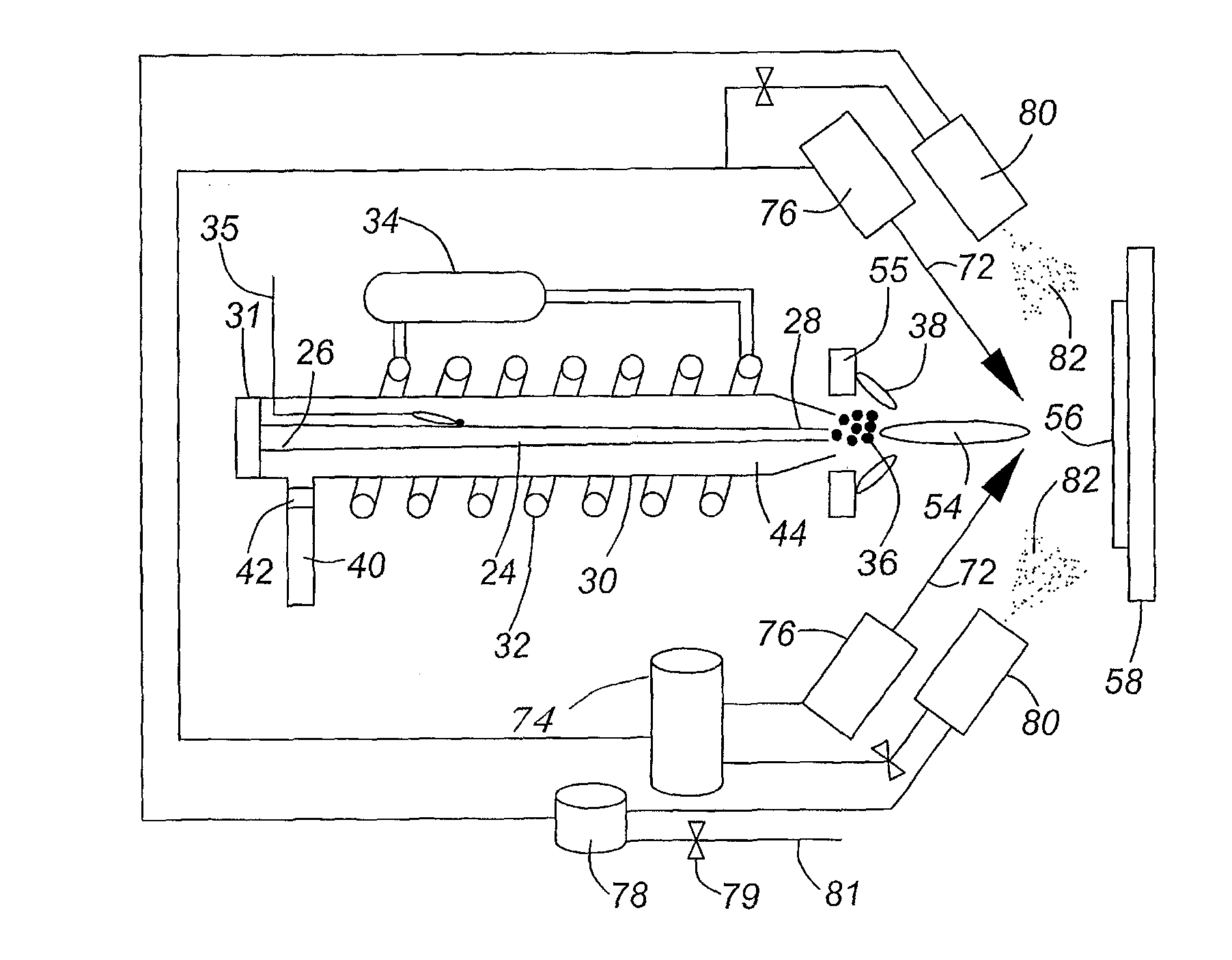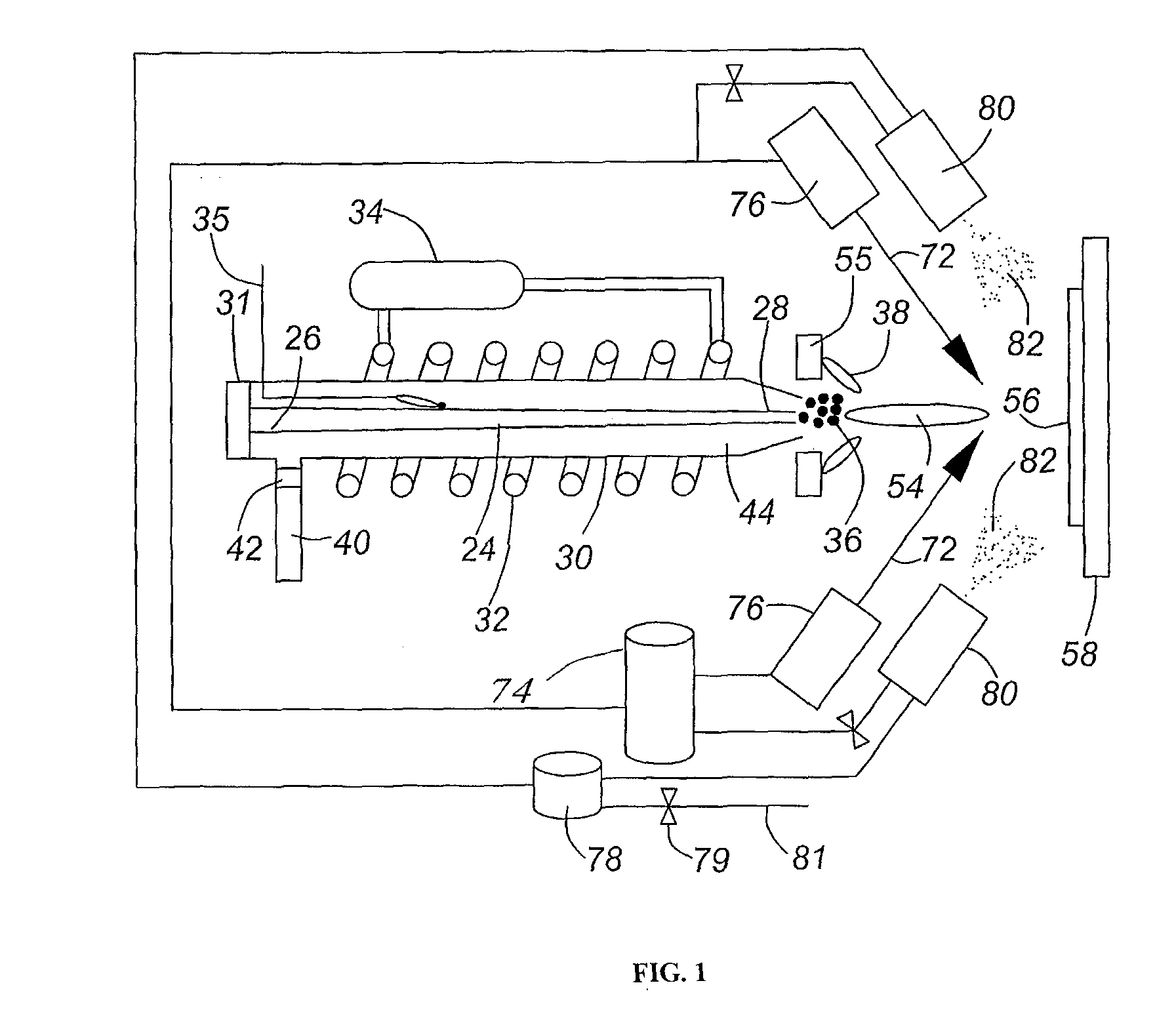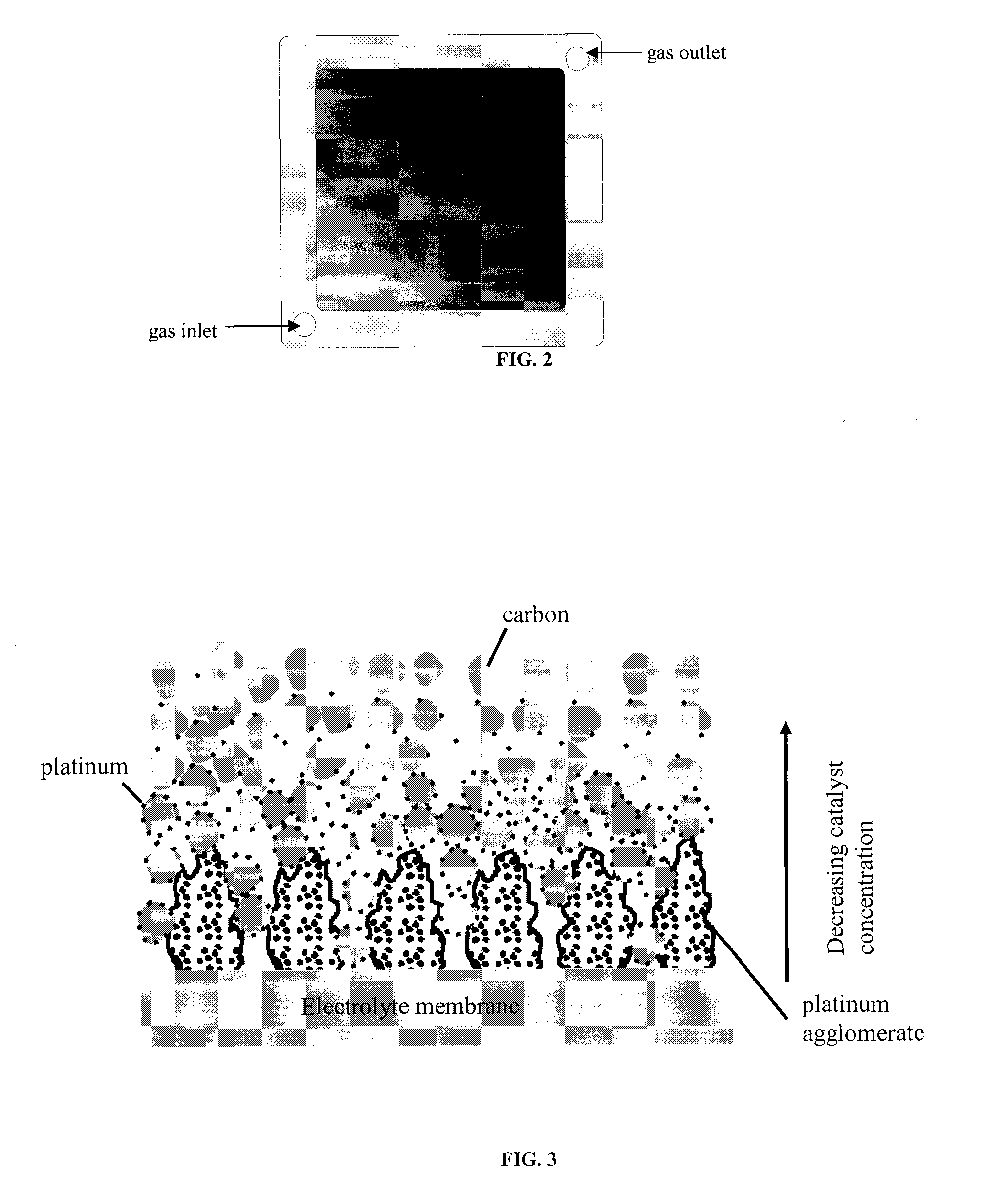Catalytic materials for fuel cell electroded and method for their production
a fuel cell and electroded technology, applied in the field of catalytic materials, can solve the problems of reducing the performance of the fuel cell, reducing the proton conductivity of the membrane, and reducing the mass transfer, so as to achieve high electron conductivity, low catalyst loading, and high performance
- Summary
- Abstract
- Description
- Claims
- Application Information
AI Technical Summary
Benefits of technology
Problems solved by technology
Method used
Image
Examples
example 1
Unsupported Platinum Catalyst Layer
[0117]A variant of the RSDT method allows the deposition of a catalyst layer without support or ionomer directly onto a polymer substrate i.e. a membrane.
[0118]FIG. 4a shows a transmission electron microscope (TEM) image of 100 nm thick unsupported platinum catalyst layer deposited by RSDT onto a Nafion® membrane using only the primary reactant comprising a catalyst material (platinum in this case) in the deposition process.
[0119]FIG. 4b shows a TEM image of bi-layer structure of the catalyst layer comprising an ultra-thin (with 45-90 nm thickness) dense unsupported Pt layer disposed directly on the membrane and a uniformly distributed supported catalyst layer disposed on the top of the unsupported CL; primary reactant comprising a catalyst material (platinum in this case) initially deposited (thin black line in upper left corner) followed by a second layer comprising primary (platinum in this case), secondary (carbon) and tertiary (a perfluorosulf...
example 2
Confirmation of Platinum Composition and Phase
[0134]XRD analysis was carried out to investigate the phase composition of the catalyst coatings produced by RSDT. Substrates include both reference inorganic substrates and organic polymer substrates to get clear spectra and eliminate possible interferences.
[0135]Coatings on amorphous (glass) and crystalline (mono-crystalline Si wafer) inorganic substrates covered the deposition temperature range of 100-220 C, which is typical for depositions on polymer substrates. Results clearly show the presence of polycrystalline Pt phase, regardless of substrate nature and over the entire temperature range (FIG. 13).
[0136]XRD spectrum of Pt layer coated on organic polymer substrate are shown in FIG. 14. Pt pattern is clearly visible. The strong intensity of the Pt (111) diffraction peak relative to the rest of the pattern indicates that RSDT unsupported catalyst layer exhibits a preferential (111) orientation of Pt crystallites.
XPS Examination
[0137...
example 3
Deposition of Ternary Composite—Platinum, Carbon and Ionomer Based on Perfluorosulfonic Acid
[0148]Following the procedures listed for platinum-only depositions and modifying the process a binary composite solution can be added to the platinum flame plume to produce a supported uniformly distributed ternary composite CL. Using a secondary set of commercially available spray nozzles (EFD-inc.), we introduce the binary component at angles of 80-30° relative to the flame centerline. The binary mixture is formed by mixing given ratios of carbon powder (such as Vulcan XC-72R) and a perfluorosulfonic acid in a suitable solvent, sonicating the mixture and spraying directly into the gas plume containing Pt particles.
[0149]The flux rate of the carbon / ionomer solution and platinum metal are decoupled in this process. Very specific platinum to carbon ratios can be achieved simply by fixing the starting concentration of either platinum or carbon. Likewise, the ionomer composition can also be adj...
PUM
| Property | Measurement | Unit |
|---|---|---|
| size | aaaaa | aaaaa |
| thickness | aaaaa | aaaaa |
| thickness | aaaaa | aaaaa |
Abstract
Description
Claims
Application Information
 Login to View More
Login to View More - R&D
- Intellectual Property
- Life Sciences
- Materials
- Tech Scout
- Unparalleled Data Quality
- Higher Quality Content
- 60% Fewer Hallucinations
Browse by: Latest US Patents, China's latest patents, Technical Efficacy Thesaurus, Application Domain, Technology Topic, Popular Technical Reports.
© 2025 PatSnap. All rights reserved.Legal|Privacy policy|Modern Slavery Act Transparency Statement|Sitemap|About US| Contact US: help@patsnap.com



